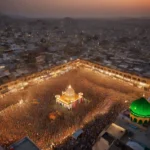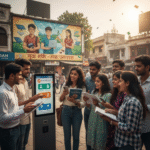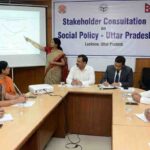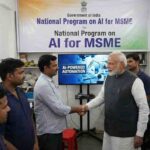Introduction
Uttar Pradesh (UP), India’s most populous state, has emerged as a focal point of political discourse due to its ambitious infrastructure development. Projects like the Ganga Expressway, Jewar International Airport, and urban metro expansions have not only transformed the state’s economic landscape but also reshaped its political narrative. Infrastructure development in UP is more than a tool for progress—it is a powerful lever for political attention and influence. This article delves into how infrastructure projects in UP attract political focus and shape governance.
The Scale of Infrastructure in Uttar Pradesh
1. Transformational Projects
UP’s infrastructure projects are among the largest in the country, reflecting the state’s economic and political ambitions.
- Major Initiatives:
- Jewar International Airport: Set to be one of the largest airports in Asia, expected to handle over 12 million passengers annually in its first phase.
- Ganga Expressway: Spanning 594 km, it will connect the state’s eastern and western regions, reducing travel time and boosting trade.
- Purvanchal Expressway: Operational since 2021, it connects Lucknow to eastern UP, fostering regional growth.
(Source: UP Expressways Industrial Development Authority)
2. Urban Connectivity
Urban infrastructure projects like metro rail expansions in Lucknow, Kanpur, and Agra aim to improve connectivity and reduce congestion.
- Impact:
- Metro projects provide faster transit options and enhance the urban quality of life, aligning with Smart City initiatives.
(Source: Smart Cities Mission)
Why Infrastructure Development Attracts Political Attention
1. Electoral Promises
Infrastructure development is often central to political campaigns in UP, symbolizing progress and governance.
- Key Insight:
- The ruling BJP’s focus on expressways, airports, and urban projects in recent elections has showcased infrastructure as a visible marker of development.
2. Economic Impact
Large-scale infrastructure projects generate jobs, attract investments, and boost the state’s economy, which are critical metrics for political success.
- Example:
- The Jewar Airport project is expected to create over 1 lakh direct and indirect jobs, making it a flagship initiative for political mileage.
(Source: UP Government Reports)
3. Regional Equity
Infrastructure projects address regional imbalances, making them a strategic tool to gain political favor in underdeveloped areas.
- Case Study:
- The Bundelkhand Expressway, inaugurated in 2022, aims to bring development to one of the most backward regions of the state, strengthening the political narrative of inclusive growth.
(Source: NITI Aayog)
Challenges in Linking Infrastructure to Political Strategies
1. Delayed Execution
- Issue:
- Delays in project completion can backfire, drawing criticism instead of praise.
- Example:
- Prolonged timelines for metro expansions in Kanpur and Agra have dampened initial enthusiasm.
2. Environmental Concerns
- Impact:
- Large projects often face opposition due to deforestation, displacement, and ecological imbalances, complicating political narratives.
(Source: Ministry of Environment and Forests)
3. Perceived Regional Bias
- Challenge:
- Critics argue that projects are concentrated in western UP, leaving regions like Purvanchal and Bundelkhand relatively underdeveloped.
Strategies to Leverage Infrastructure for Political Gains
1. Ensuring Timely Completion
Timely execution of projects enhances political credibility and public trust.
2. Focusing on Sustainability
Integrating green technologies and renewable energy in infrastructure projects can mitigate environmental concerns.
3. Regional Balance
Distributing projects across all regions ensures equitable development and broad-based political support.
4. Public Engagement
Involving citizens in project planning and implementation creates a sense of ownership and strengthens the political narrative.
Expert Opinions
- Economist’s Perspective:
- “UP’s infrastructure projects are transforming its economic landscape, but their political success hinges on equitable implementation and timely delivery.”
- Urban Planner’s Insight:
- “Urban connectivity initiatives in cities like Kanpur and Agra show the potential of infrastructure to enhance quality of life, but rural inclusion must remain a focus.”
(Source: PRS Legislative Research)
Conclusion
Infrastructure development in Uttar Pradesh is more than just a driver of economic growth—it is a powerful political tool. Projects that visibly transform lives and regions not only enhance governance but also provide political capital to ruling parties. However, for infrastructure to truly align with political goals, it must prioritize inclusivity, sustainability, and timely delivery. As UP continues its development journey, the interplay between infrastructure and politics will remain a defining feature of its governance and electoral strategies.














